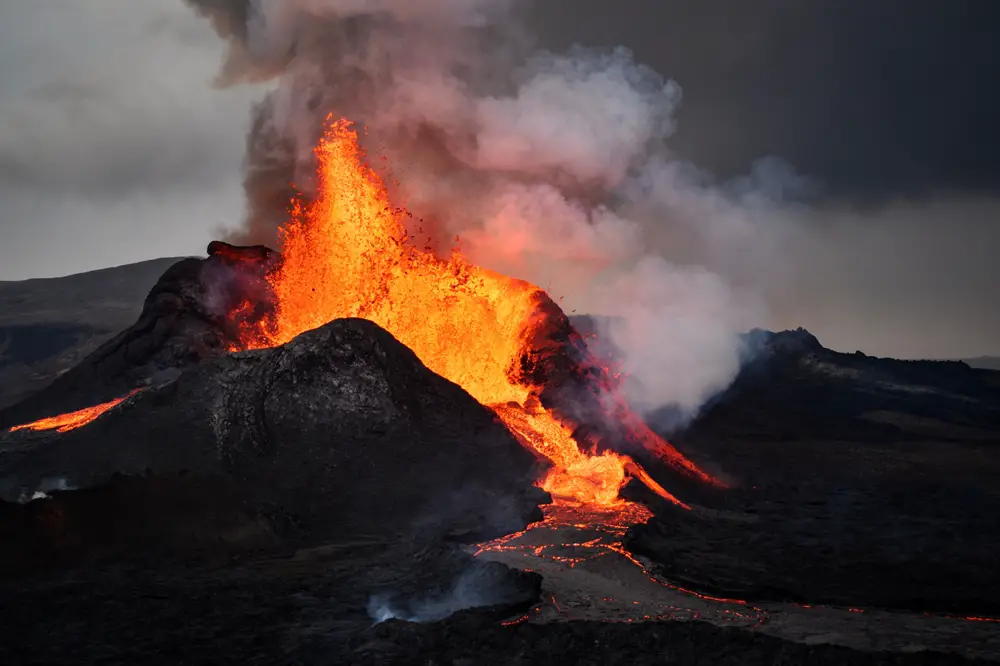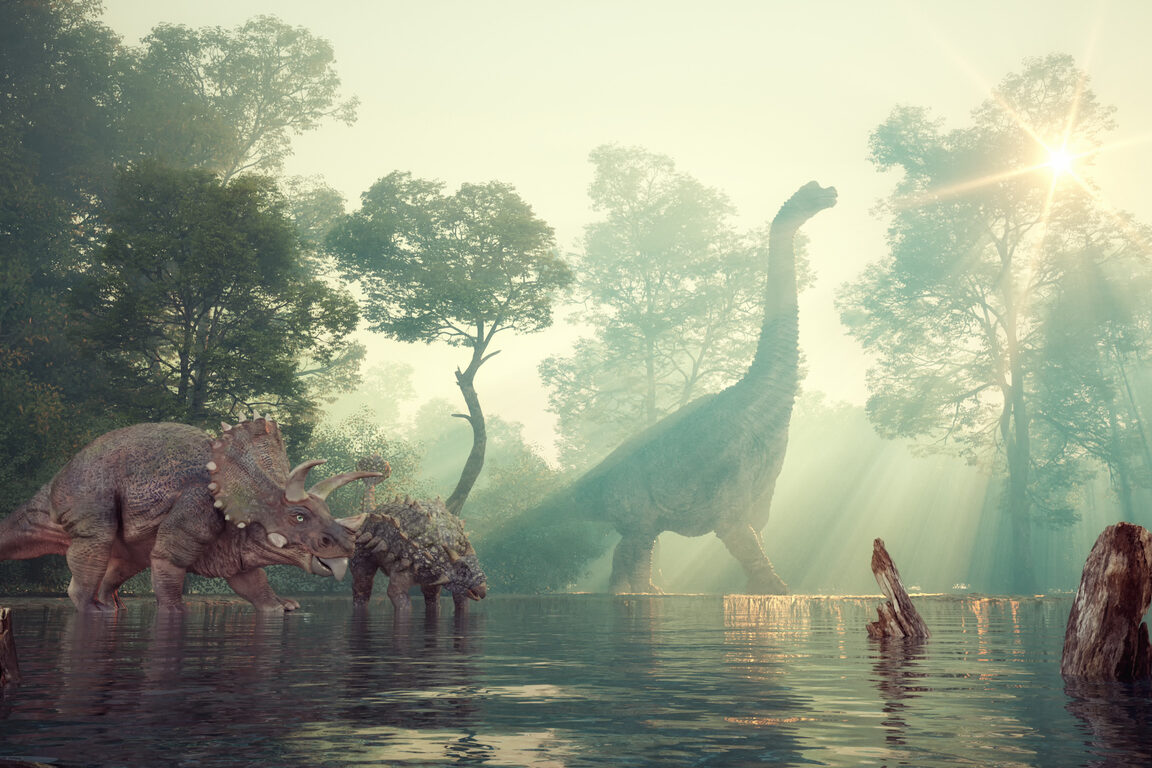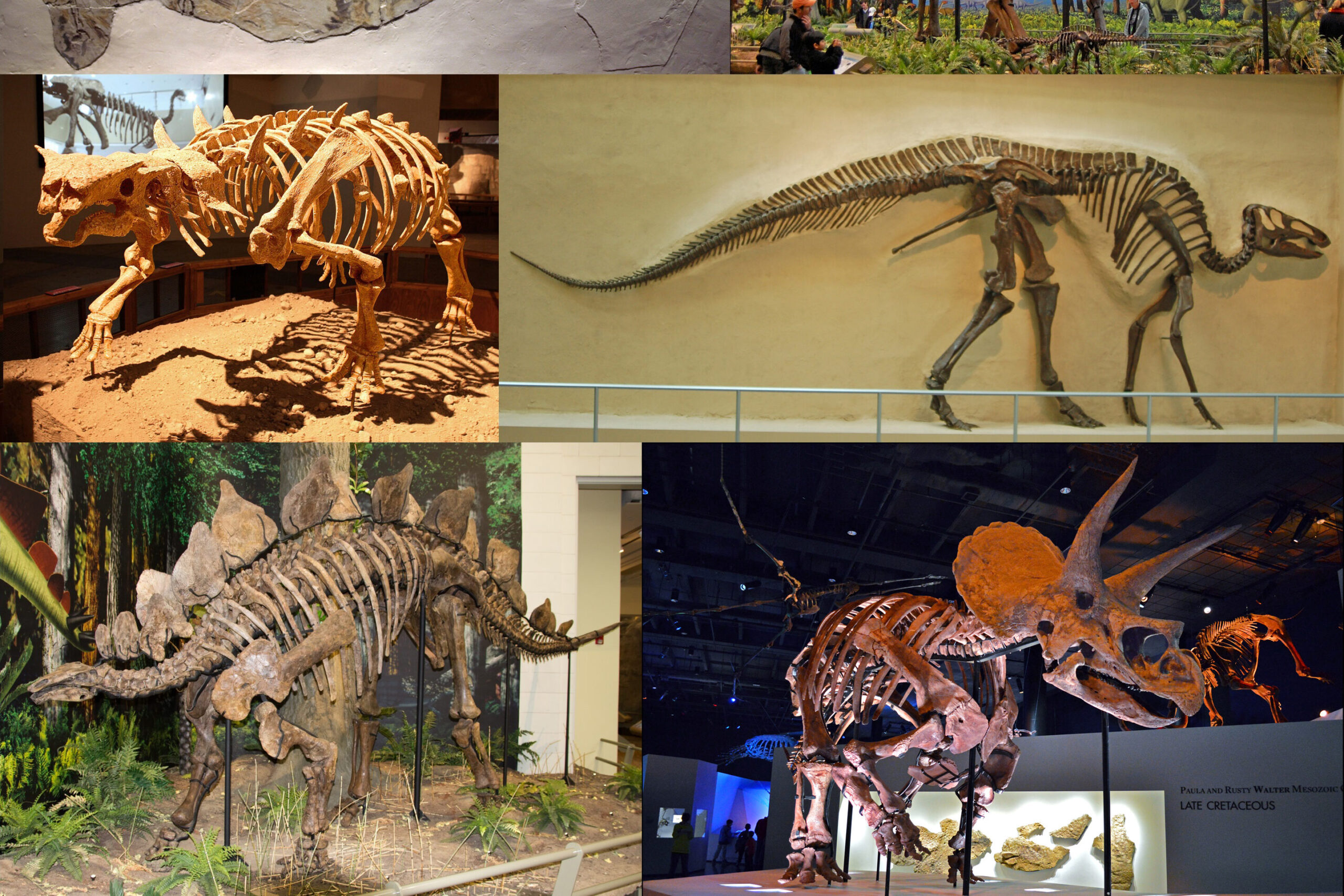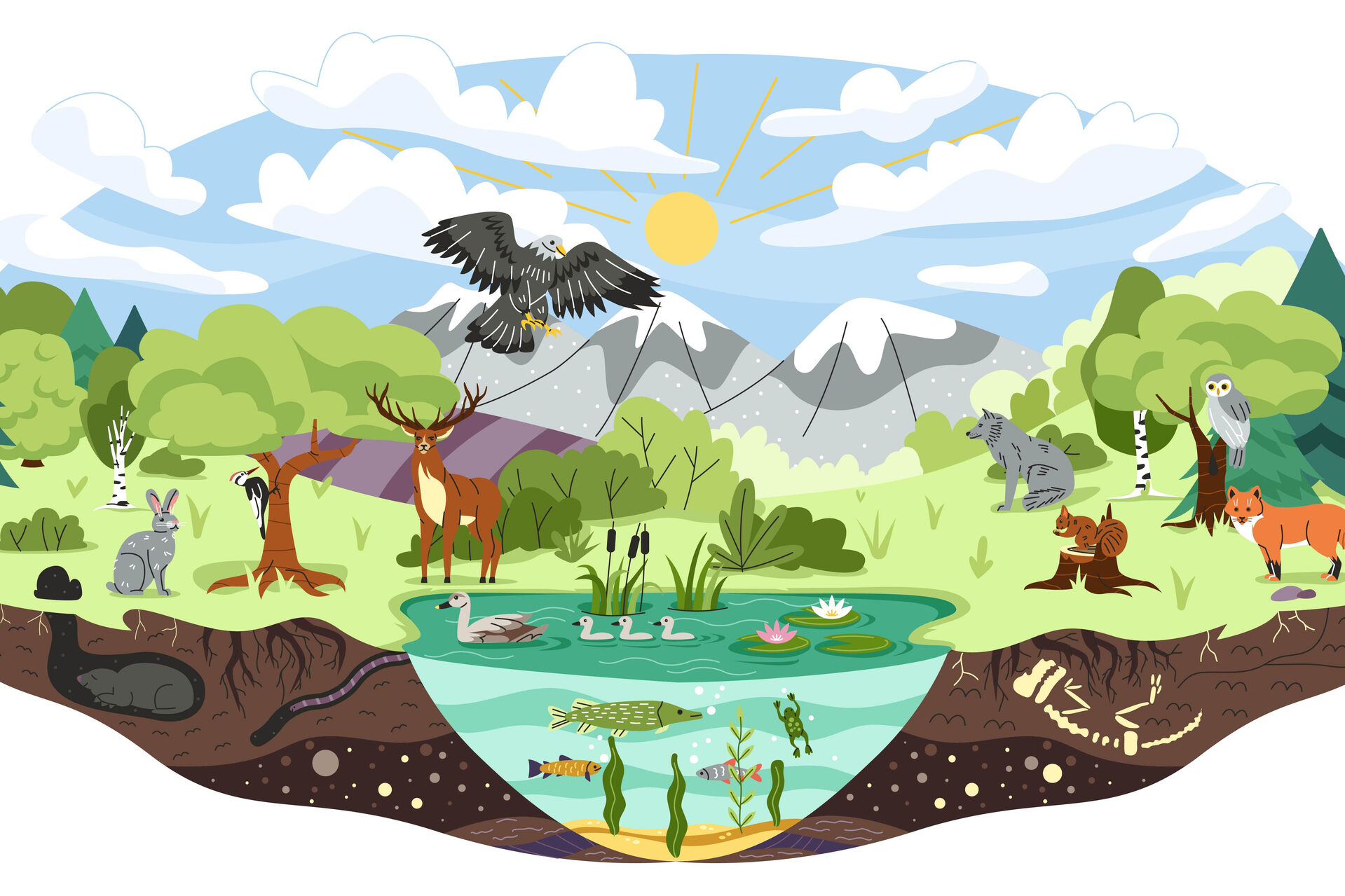1. The Asteroid Impact Theory Isn’t the Whole Story

For decades, the prevailing belief was that a massive asteroid slammed into Earth 66 million years ago, triggering wildfires, tsunamis, and a “nuclear winter” that wiped out the dinosaurs. While this event undoubtedly played a huge role in their extinction, new evidence suggests it wasn’t the sole reason. Some scientists now argue that dinosaurs were already struggling before the asteroid hit. Fossil records show a decline in certain species millions of years earlier, possibly due to environmental changes. This raises the question: Was the asteroid just the final blow rather than the entire cause?
Recent studies suggest that massive volcanic eruptions, shifting sea levels, and climate fluctuations may have set the stage for a slow, painful extinction. The Deccan Traps, an enormous volcanic region in what is now India, erupted around the same time as the asteroid impact. These eruptions would have released vast amounts of carbon dioxide and sulfur into the atmosphere, causing global temperatures to fluctuate wildly. If dinosaurs were already weakened by these conditions, the asteroid impact might have just sealed their fate rather than being the sole cause.
2. Volcanoes May Have Played a Bigger Role Than Expected

The asteroid impact theory has long overshadowed another major factor: volcanic activity. Around the same time the asteroid struck, the Deccan Traps were erupting on a scale that’s almost impossible to imagine today. These eruptions weren’t just isolated events—they lasted for thousands of years, releasing gases that could have drastically altered the planet’s climate. Some researchers now argue that this prolonged volcanic activity might have caused a gradual decline in dinosaur populations long before the asteroid made impact.
Sulfur dioxide from the eruptions could have led to short-term cooling, while the buildup of carbon dioxide would have caused long-term warming. This kind of climate instability would have made it difficult for many species to adapt. Some evidence suggests that acid rain from the eruptions might have devastated plant life, disrupting food chains. If this is true, the asteroid wasn’t the dinosaurs’ only problem—it was just the final disaster in a series of catastrophes that had already weakened ecosystems across the planet.
3. Dinosaurs May Have Been Struggling to Adapt to a Changing World

While dinosaurs ruled the Earth for over 160 million years, they weren’t immune to environmental shifts. New evidence suggests that by the time the asteroid struck, some species were already in decline. Changing sea levels and shifting continents may have caused disruptions in food sources and breeding grounds. Some species adapted, but others might have struggled to cope with these gradual transformations. If populations were already shrinking, the asteroid impact might not have been the sole reason for their extinction—it could have simply finished what other natural forces had started.
Another surprising revelation comes from studies on dinosaur eggshells. Some scientists believe that changes in atmospheric conditions might have affected reproduction. If eggs were becoming thinner or struggling to hatch, this would have made it even harder for dinosaurs to maintain stable populations. When the asteroid hit, it didn’t just kill the dinosaurs instantly—it may have wiped out an already weakened group that was fighting an uphill battle for survival.
4. Some Dinosaurs May Have Survived Longer Than We Thought

The idea that all dinosaurs were wiped out in an instant is being challenged by new fossil discoveries. While most species likely perished relatively quickly, some may have clung on for longer than previously believed. In isolated regions, pockets of dinosaur populations could have survived for thousands, or even millions, of years after the main extinction event. Fossils in certain parts of North America suggest that a few species may have persisted in small numbers before finally vanishing.
If this is true, it raises fascinating questions about how long dinosaurs truly lasted. Could some have coexisted with early mammals longer than we thought? If a few species survived in isolated areas, what ultimately finished them off? Some researchers believe that the harsh post-impact conditions—such as food shortages and extreme climate swings—made it impossible for these last holdouts to endure. This theory challenges the clean-cut narrative that dinosaurs disappeared overnight and instead paints a picture of a drawn-out extinction process.
5. The Food Chain May Have Collapsed Before the Asteroid Hit

For any species to thrive, it needs a stable food supply. New research suggests that disruptions in the prehistoric food chain may have already been underway before the asteroid impact. Fossil evidence indicates that plant life was changing dramatically, possibly due to volcanic activity and shifting climates. If plant life declined, herbivores would have struggled to find enough food, and in turn, carnivores would have found fewer prey animals to hunt. This slow unraveling of the food chain might have left many dinosaur species vulnerable.
If food shortages had already begun, it would explain why some species disappeared faster than others. Larger dinosaurs, which needed enormous amounts of food to sustain themselves, may have suffered the most. Meanwhile, smaller, more adaptable species—like certain early birds and mammals—had a better chance of survival. By the time the asteroid struck, the ecosystem may have already been on the verge of collapse, making it easier for the impact to wipe out what remained.
6. Birds May Be the Dinosaurs That Made It Through

It’s easy to think of dinosaurs as completely extinct, but in reality, they may still be with us in the form of modern birds. Paleontologists now believe that certain small, feathered dinosaurs were the direct ancestors of today’s birds. These creatures may have had key survival advantages, such as the ability to fly, a fast reproductive cycle, and a more varied diet. Unlike their larger relatives, they could escape danger more easily and adapt to changing conditions more quickly.
One of the biggest clues comes from fossilized dinosaur feathers and skeletal structures. Some of these fossils bear striking similarities to modern birds, suggesting a strong evolutionary connection. The idea that some dinosaurs didn’t truly die out, but instead evolved into something new, reshapes our understanding of extinction. If birds are living dinosaurs, then in a way, the age of dinosaurs never really ended—it just transformed into something different.
7. The Truth About Dinosaur Extinction Is More Complicated Than We Thought

For years, the story of dinosaur extinction was told as a sudden, catastrophic event—a single asteroid wiping out life almost instantly. But the truth appears to be far more complex. Scientists now believe that a combination of factors, including volcanic eruptions, climate shifts, and food chain disruptions, played a major role in weakening dinosaur populations before the asteroid struck. This means that instead of one singular disaster, it was a long chain of events that led to their downfall.
This also challenges how we think about extinction in general. If multiple factors can contribute to the decline of a species, it means that Earth’s ecosystems are more fragile than we might assume. Understanding how dinosaurs disappeared can give us valuable insight into the challenges facing species today. It’s a reminder that no matter how dominant a group may seem, environmental changes can reshape the world in ways we never expect. The dinosaurs may be gone, but their story is still teaching us important lessons about survival.


